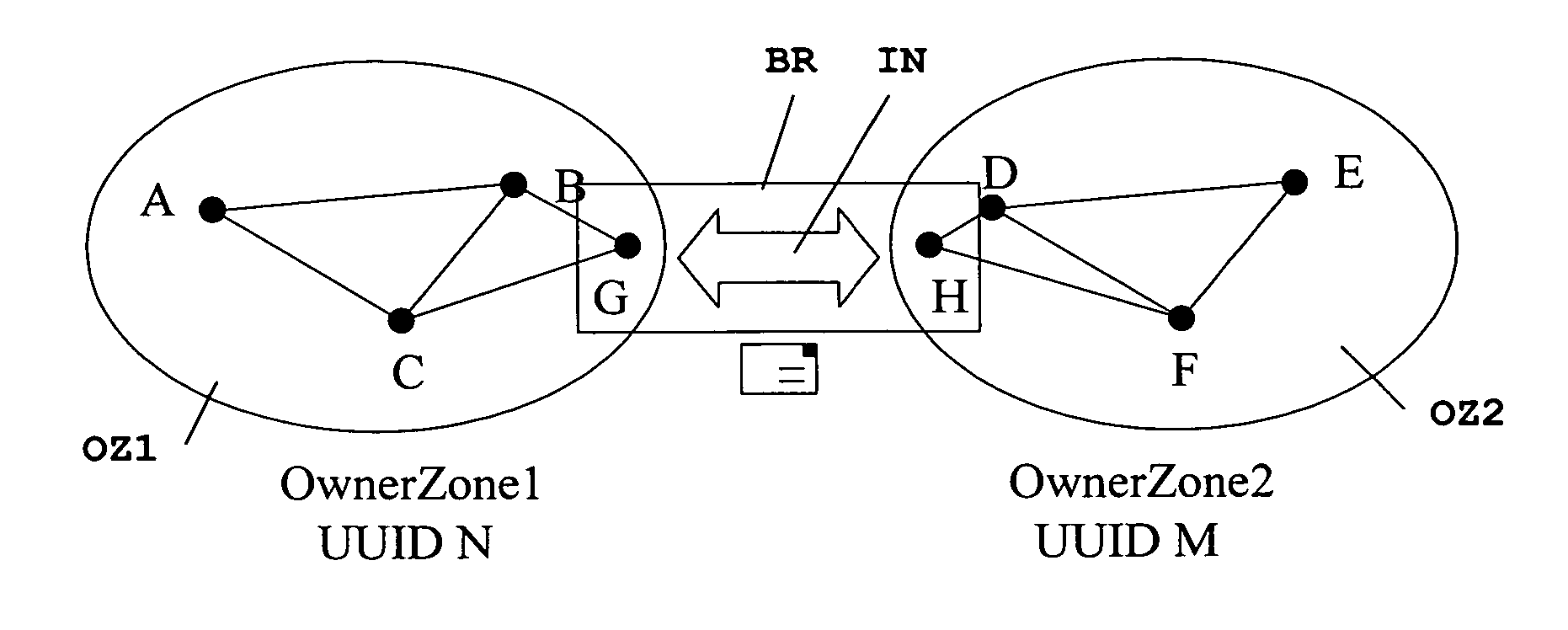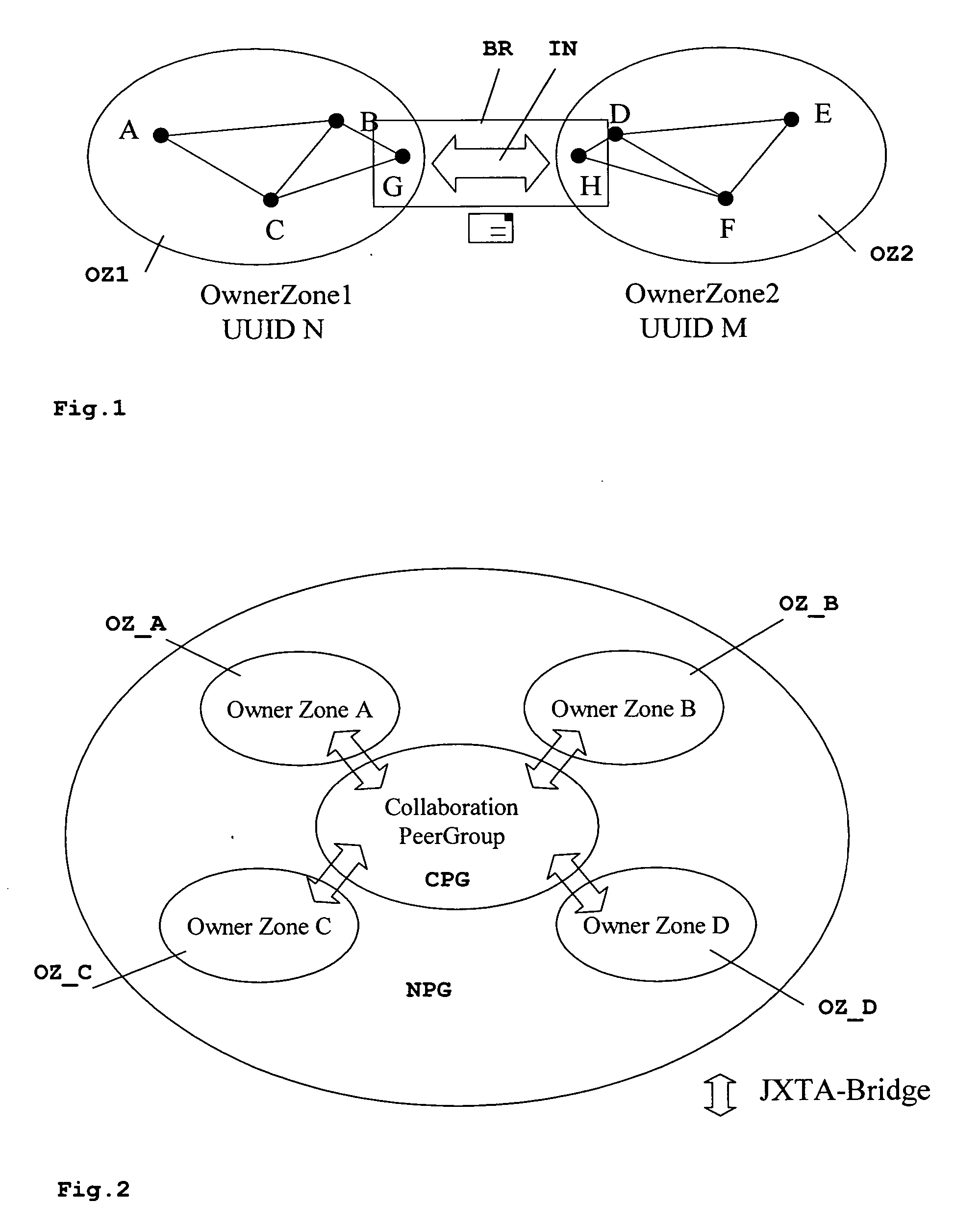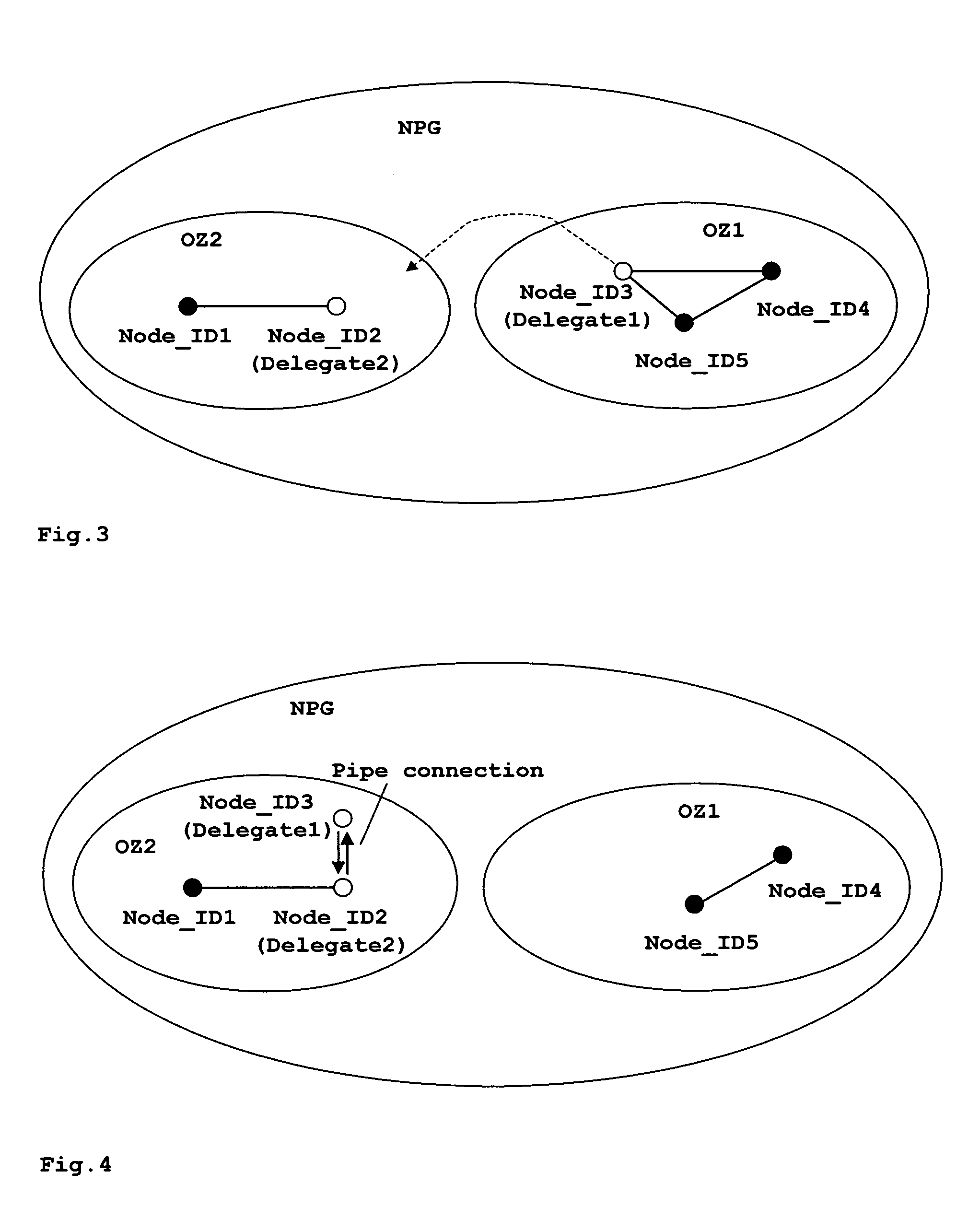Method for establishing communication between peer-groups
a peer-group and communication technology, applied in the field of establishing communication between different peer-groups, can solve the problems of great disadvantage, no detailed method known for building up a connection between different peer-groups,
- Summary
- Abstract
- Description
- Claims
- Application Information
AI Technical Summary
Benefits of technology
Problems solved by technology
Method used
Image
Examples
Embodiment Construction
[0015] Two main embodiments of the invention for trusted zone communication are disclosed: the bridging concept and the delegate concept.
[0016] 1. Trusted Zone Communication using a JXTA to JXTA bridge
[0017] Two different types of bridging services can be set-up: The first is a one-to-one connection between two OwnerZones. This allows e.g. a person to connect to his friend's home network and exchange content with him. The second type is a connection to a peer-group that works as a collaboration platform for OwnerZones. This solution uses a dedicated peer-group that is specialized just for “Trusted Zone” communication.
[0018]FIG. 1 shows an example for a one-to-one bridge solution, where a bridging peer BR uses a primary address G to join its OwnerZone OZ1, i.e. a bridging peer belongs to a first OwnerZone. As a member of the OwnerZone OZ1, the peer publishes its bridging service to the other peers within the OwnerZone. Any of them may then request a Trusted Zone connection. Furthe...
PUM
 Login to View More
Login to View More Abstract
Description
Claims
Application Information
 Login to View More
Login to View More - R&D
- Intellectual Property
- Life Sciences
- Materials
- Tech Scout
- Unparalleled Data Quality
- Higher Quality Content
- 60% Fewer Hallucinations
Browse by: Latest US Patents, China's latest patents, Technical Efficacy Thesaurus, Application Domain, Technology Topic, Popular Technical Reports.
© 2025 PatSnap. All rights reserved.Legal|Privacy policy|Modern Slavery Act Transparency Statement|Sitemap|About US| Contact US: help@patsnap.com



